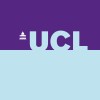
Whole-body Vibration in Spastic Hemiplegic Cerebral Palsy
Cerebral PalsySpasticTo target spasticity, balance and mobility whole body vibration exercises along with selected physical therapy is given to experimental group. Control group will receive only selected physical therapy that includes sstretching exercises, gait training, ffacilitation of postural reactions, ffacilitation of standing and weight shift and facilitation of standing balance by using a balance board.

EFFECTİVENESS OF PULSED ULTRASOUND TREATMENT ON PATIENTS WITH BELL'S PALSY
Bell PalsyBell's palsy (idiopathic facial palsy) is the most common peripheral lesion of the cranial nerves and the most common mono-neuropathy. Therapeutic ultrasound (US) is among the commonly used physical modalities for treating musculoskeletal disorders. The effects of US are due to alteration of cell membrane activity, vascular wall permeability and facilitation of tissue healing. The aim of this study is to investigate the effect of pulsed US treatment in patients with Bell's palsy when added to superficial heating, massage and exercise therapies.

Collagen Treatment in Facial Nerve Palsy
Facial Nerve PalsyTo test the effectiveness of a collagen-based treatment for patients complaining of long standing facial nerve axonotmesis, who are following a proprioceptive neuromuscular facilitation protocol (Kabat method), compared to a group only undergoing the Kabat method.

Erector Spinae Plane Versus Interscalene Blocks for Shoulder Surgery
AnesthesiaLocal3 moreThe goal of this study is the evaluation of erector spinae plane (ESP) blocks as an alternative to interscalene brachial plexus nerve blocks for rotator cuff repair and total shoulder arthroplasty procedures. Currently, single shot interscalene nerve blocks are performed for rotator cuff repair surgeries, and interscalene nerve catheters are placed for total shoulder arthroplasty surgeries. Erector spinae plane blocks are commonly used as part of the anesthetic plan for other surgeries, but less so for shoulder surgeries. The investigators would like to study whether an ESP block can provide similar pain control compared to an interscalene nerve block, with less risk of upper extremity motor block and phrenic nerve block.

Reliability and Validity of Strength Measurements of the Lower Limbs in Children With Bilateral...
ChildrenCerebral Palsy1 moreSpecific musculo-tendinous adaptations in children with cerebral palsy (CP) have an influence on muscle strength and consequently on functional behavior and participation. Evidence of strength training programs has been shown on level of body function but transfer to levels of activity and participation is still limited. Lack of transfer is related to lack of specificity of the training and poor overall quality of the interventions (intensity, duration, frequency and/or type). The use of functional strength exercises to assess and train strength of the lower limbs in children with CP is well implemented in the most functional children with CP (GMFCS-level I). To assess isometric strength the hand held dynamometer (HHD) can be used in clinical settings but reliability of this tool is questionable. The aim of this study is to adapt existing functional strength tests for less functional children with CP (focussing on GMFCS level II and III) and to investigate the correlation with isometric strength measurements and other functional parameters.

Progressive Supervised Home-based Strength Training in Children With Spastic Cerebral Palsy
Cerebral PalsySpasticA randomized controlled trail will be carried out to investigate the effect of a 12-week supervised home-based progressive strength intervention in children with spastic cerebral palsy aged 5-11 years. The results of this strength intervention aiming for increased strength and muscle hypertrophy will serve as input for a clinical decision making framework based on muscle and tendon architecture.

Cuevas Medek Exercises on Balance and Postural Control in Children With Spastic Cerebral Palsy
Spastic Cerebral PalsyCerebral palsy (CP) is a disorder characterized by abnormal tone, posture and movement and clinically classified based on the predominant motor syndrome-spastic hemiplegia, spastic diplegia, spastic quadriplegia, and extra-pyramidal or dyskinetic. Clinical prediction models and neuroimaging have been used to diagnose CP before the age of 2 years, but further research is necessary. Cuevas Medek Exercises (CME) is a pediatric physiotherapy approach for children with developmental motor delay impacting the central nervous system. According to Ramon Cuevas, who developed the therapy, CME are mainly based on the principle of provoking novel automatic motor reactions using exercises against gravity with progressive distal holding. This study will find the effects of Cuevas Medak Exercises on Balance and Postural control in children with spastic cerebral palsy. This Randomized Controlled Trial will recruit the participants through random sampling. Participants will be randomly divided into 2 groups. Two groups of children aged between 2 and 5 years, suffering from cerebral palsy in spastic form, one for control and one for experiment. Controlled will get conventional treatment while study group will get conventional treatment with Cuevas Medak Exercises. Treatment duration is of 12 weeks. Progress will monitored every month. The frequency of recovery sessions will 3 sessions/week, and the duration of a session will 45 minutes. Patient evaluation will be made at the beginning and the end of the treatment through pediatric balance scale and static balance test. Data will be analyzed through SPSS 25.

Evaluating the Feasibility of Acapella® Choice as a Dysphonia Treatment
Muscle Tension DysphoniaVocal Fold Palsy3 moreA feasibility study to identify the immediate effect on the voices of patients with voice disorders (muscle tension dysphonia, vocal fold palsy or presbylaryngis) produced by exercising with Acapella Choice as a form of semioccluded vocal tract exercise (SOVTE).

Effectiveness of Bobath/Halliwick on Children With Cerebral Palsy
Cerebral PalsyInvestigation of the effectiveness of water based therapy on children with Cerebral Palsy (CP)

Efficacy and Safety of Transcranial dIrect Current stiMulation (tDCS) in Progressive Supranuclear...
Progressive Supranuclear PalsyMotor and Cognitive SymptomsThis is a double-blind, randomized, sham-controlled clinical trial that aim to verify the safety and the efficacy of anodal transcranial direct current stimulation (tDCS) on cognitive and motor symptoms in Progressive Supranuclear Palsy (PSP) over the left dorsolateral prefrontal cortex (dlPFC).
